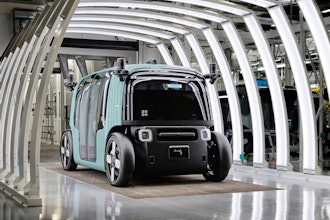A study was recently released by North Carolina State University that provides evidence supporting the fact that electric drive vehicles (EDVs) have little impact on reducing emissions. As an  engineering audience that knows efficiency when they see it, most Manufacturing.net and Product Design & Development (an M.net sister publication) readers will throw their hands in the air having known this for some time.
engineering audience that knows efficiency when they see it, most Manufacturing.net and Product Design & Development (an M.net sister publication) readers will throw their hands in the air having known this for some time.
The study concluded that even a drastic, sudden increase in EDV-use by 2050 wouldn’t reduce emissions of air pollutants, such as carbon dioxide, sulfur dioxide, or nitrogen oxides. Through 108 different scenarios in a model, the researchers found that even if EDVs made up 42 percent of passenger vehicles in the U.S., there would be little or no reduction in the emission of key air pollutants.
Researchers looked at five different factors in the 108 scenarios. For example, one of the scenarios included low oil prices, high natural gas prices, low battery cost, a CO2 cap, and no renewable portfolio standard. These varying combinations provided the researchers with insight to a broad spectrum of EDV use.
This has obvious significance to the growing electric car industry. Though gas prices may be less for EDV drivers, their environmental impact would be of little to no significance (a major selling point). The “green movement” might be massive, but electric cars will have little impact, according to the study.
According to Dr. Joseph DeCarolis, an assistant professor of civil, construction, and environmental engineering at NC State and senior author of the study, the fundamental insight of the study was geared toward policy makers. “It isn't prudent to simply incentivize the purchase of electric drive vehicles and then sit back and wait for the emissions benefits to accrue,” he says. “The emissions benefits--if any--will depend on a broad set of future conditions. Therefore, public policies that target EDV deployment should be formulated, reviewed, and revised with careful attention paid to evolving changes to the broader energy system over time."
The study makes mention of the increase in power-plant emissions, due to charging EDVs, offsetting any emissions that might be saved by the vehicles. When questioned about the emissions impact of battery construction, DeCarolis mentioned previous studies said, “Battery construction affects emissions, but is not as significant as vehicle manufacture or electricity consumption during the use phase.”
Though the study makes it clear that using EDVs will have little impact on emissions, that isn’t to say that they won’t make personal energy costs lower over time. DeCarolis says, “To adequately address climate change, we need to deal with the transportation sector eventually, but it will be harder given the challenge of replacing or revamping all of the existing fuel infrastructure.”
It might make more of an impact to concentrate innovation in residential, commercial, and industrial sectors before adopting EDVs as a way to reduce emissions. “The lowest hanging fruit is in other end-use sectors where energy can be saved cost-effectively by improving end-use device efficiency. On the supply side, it probably makes the most sense to reduce emissions in the electric sector first, since there are large point sources of emissions and many technology options,” DeCarolis explains. “If we clean up electricity in the shorter term, then deploy electric vehicles, they may produce larger emissions benefits.”
When all is said and done, EDVs won’t save the planet by themselves, even if they save your pocketbook in the long run. The only way to impact carbon emissions is to do so on a much larger scale via the infrastructure, and then watch the impacting changes occur on the level of auto emissions.






















